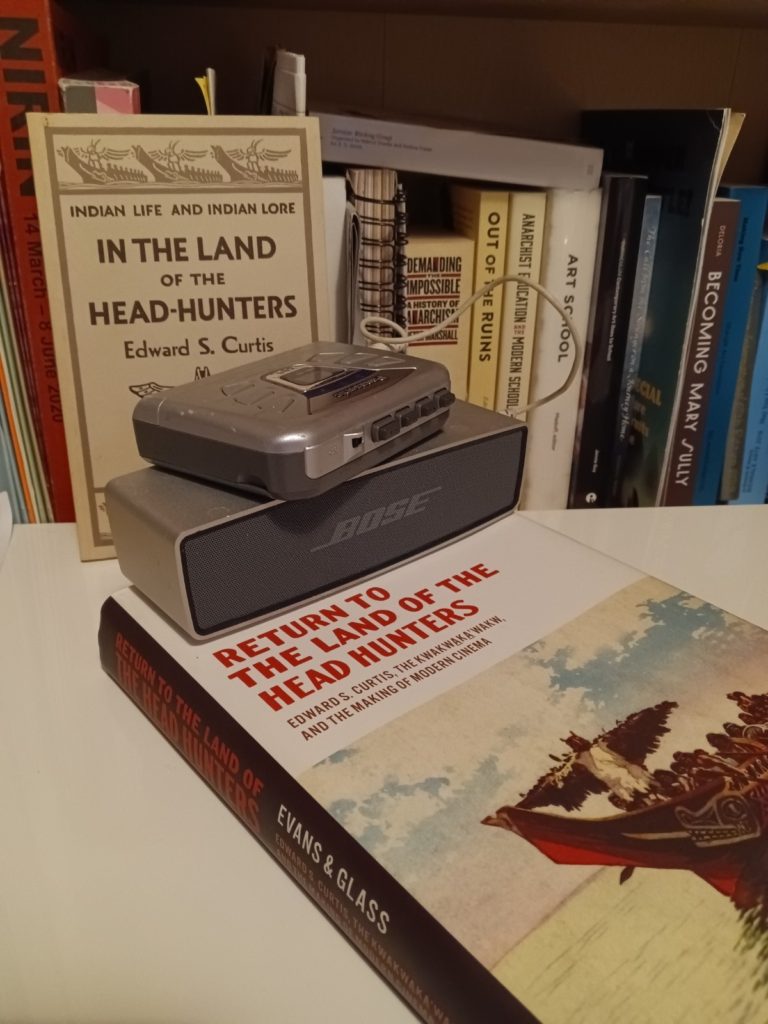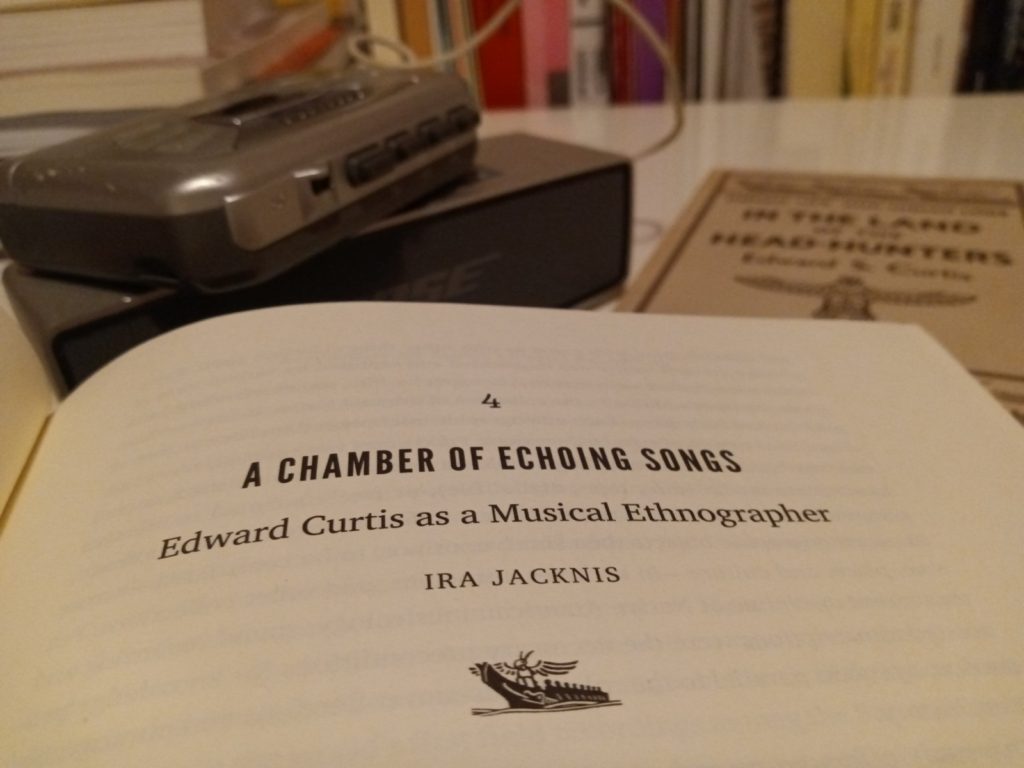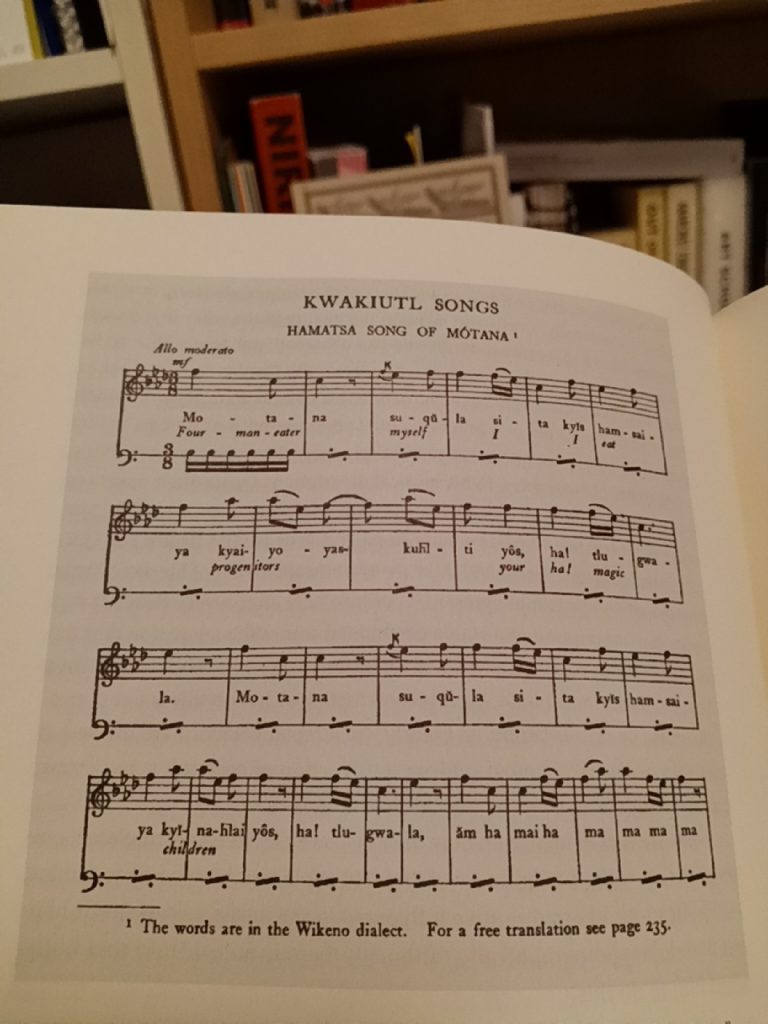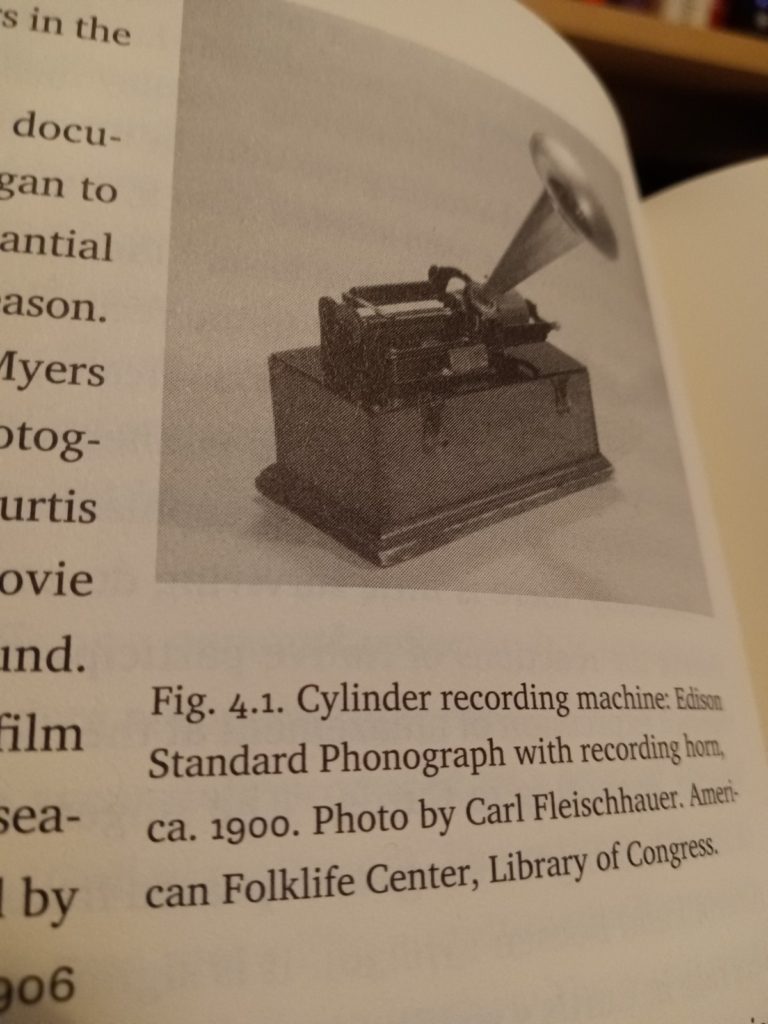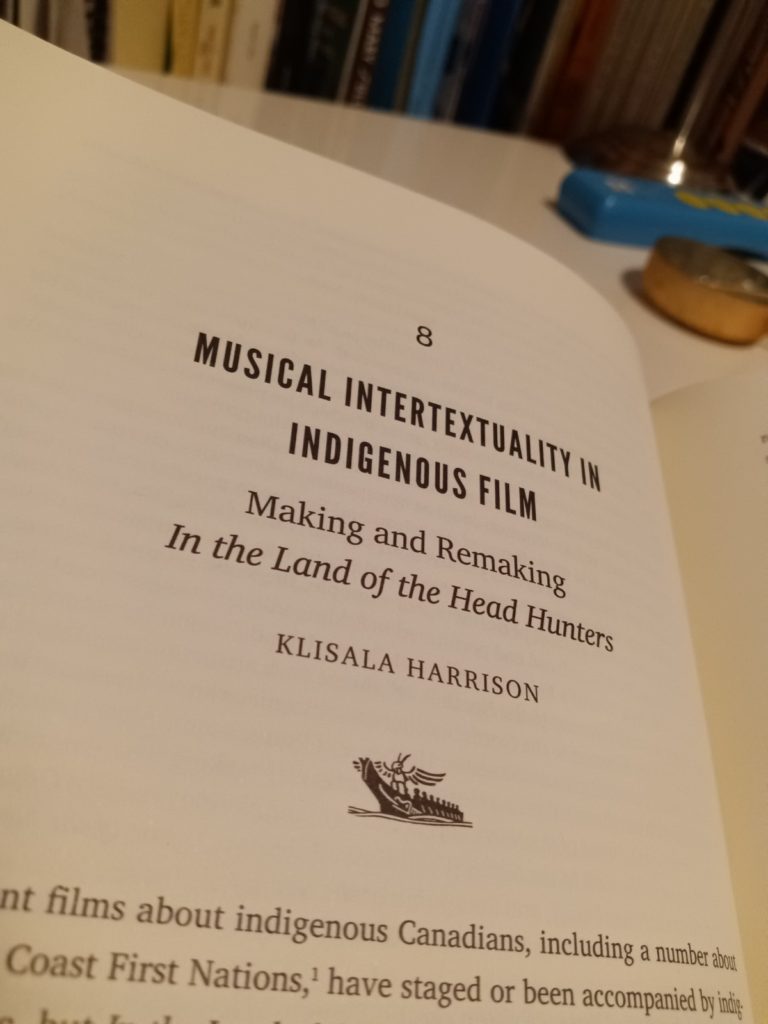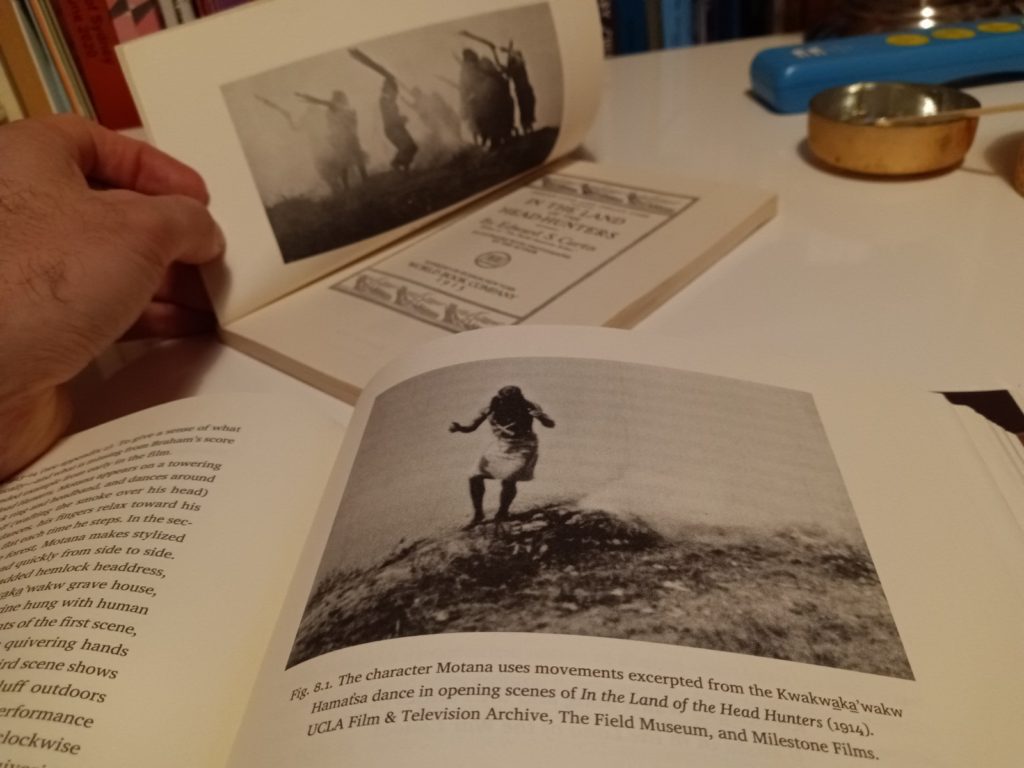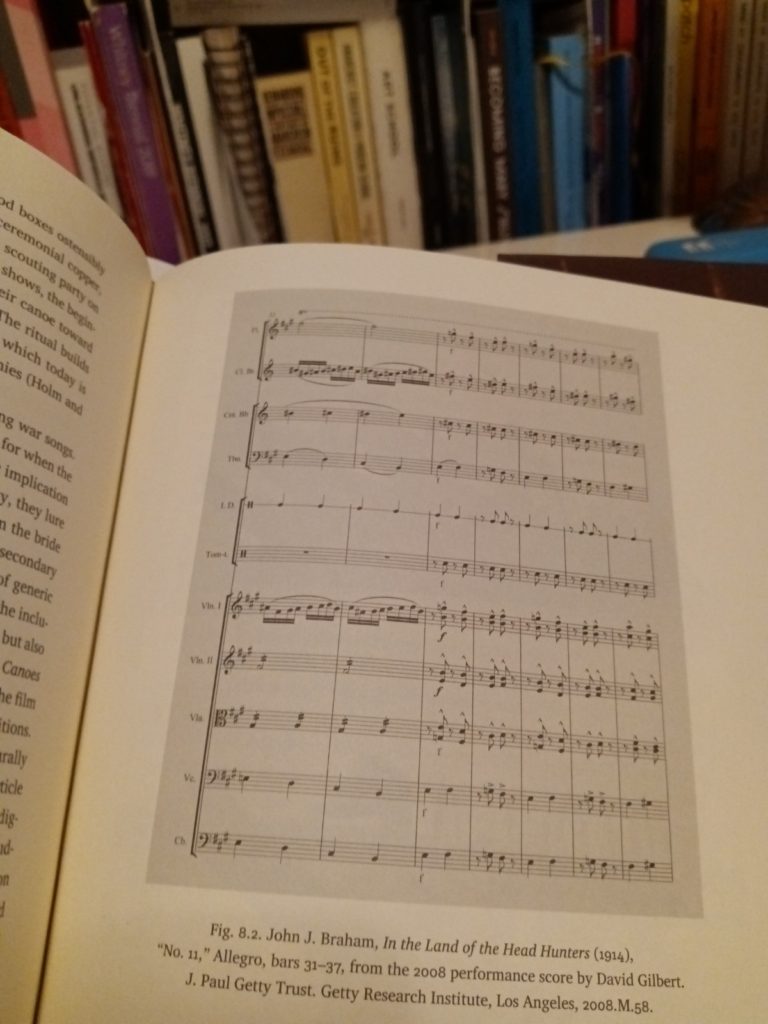Here [Edward S.] Curtis seems to regard “photography” not as visual documentation but as the presentation of detailed facts, of which sound could be a part. Yet, while he often contrasted the written to the pictorial record…Curtis rarely spoke of sound or music. This avoidance may have resulted from the fact that the prime actor here was not Curtis but his more aurally talented assistant, William Myers….”Myers even had the gift, according to Curtis, of being able to sing accurately by ear Indian songs he had recorded, even though he did not understand their literal meaning.” (Gidley 1998:136)…Generally, there is little surviving documentation on the recording sessions or the reactions of Native participants. What we do have is the oft repeated expression of amazement at the machine’s mimetic abilities (Brady 1999: 31). According to Curtis, “The singers and fellow tribesman were awestruck on hearing the songs as repeated from what they called the magic box” (Graybill and Boesen 1976:30).
– from Ira Jacknis ‘A Chamber of Echoing Songs: Edward Curtis as a Musical Ethnographer’ in ‘Return to the Land of the Head Hunters: Edward S. Curtis, the Kwakwa̱ka̱ʼwakw, and the Making of Modern Cinema, ed. Brad Evans and Aaron Glass, University of Washington Press: Seattle, 2014, pp. 99, 101.
